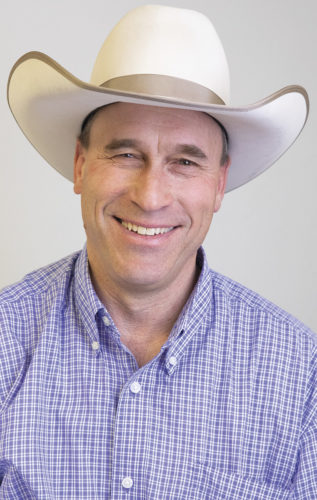If anyone ever asks me in casual conversation about the duration of my calving season, the official answer is a quick “under 60 days.” I wouldn’t want anyone to think I’m anything less than cutting-edge, and a calving season that stretches out to 75 days – well, that just isn’t going to impress anybody.
But if you’re taking time to read this, I guess I can consider you part of my inner circle. Hence, I’ll let you in on a little secret: The truth is that I always have more cows than I’d really care to admit that don’t cross the calving finish line until well into May, even though the first calf arrives right around the first of March. Yes, I know that admission may diminish some of my cowman street cred, but it fits the narrative of my story.
Since we’re parked here at the confessional anyway, I guess this would be a good time to admit that those few later-born calves sometimes don’t receive the attention of the calves that are born during the meat of the calving season when I’m fully locked in “the zone.” After all, I’m not fighting so much with the weather and my mind is more focused on whatever lies ahead with the promise of summer. And of course, with nicer weather, the potential for disaster is substantially diminished.
But the odd behavior of Idaho’s late spring weather can bring with it a few complications of its own. Somehow, the wider swings in temperature seem to invite little devils such as pneumonia and scours to the party, and the younger calves are certainly the most vulnerable. I’m taught over and over again that even though the days and my disposition (which is inextricably bound to the weather) may be a bit brighter as the days become longer, there are still babies that need to be seen and subsequently cared for.
Over the years, my passion for all things bovine, mixed with the opportunities I’ve had to write a story or two, have combined to lead me to cherished friendships with people across the entire country and spectrum of the cowboy and ranching world. Among those whom I dare call my good friends is Jim, a savvy old South Dakota native cowboy with a penchant for doing good. I met Jim at the National Western in Denver a decade or so ago. I’ve since come to rely on his unique brand of wisdom and his unabashed ambition to bring light to the downtrodden to inspire me when I’m in need of insight and positive motivation.
Wherever Jim goes, he seems to be led to people in need of a friendly stranger at the precise moment he happens to show up. A chance meeting with a hotel desk clerk in Wichita or weary waitress at a truck stop in the Texas Panhandle can turn into an hourlong deep dive discussion about their own self-worth and their respective places in the world. Never mind his own worries or if he misses his appointment to look at a horse or a new herd sire prospect; Jim never seems to lose sight of what is really the big picture.
Not long ago, I happened to be riding through the cows when I came across one of the aforementioned latecomers that had caught one of those rotten springtime bugs. I roped the hapless baby, and as I fished around in the saddlebags for a syringe and an eartag, my phone started to buzz. Nine times out of 10 in a similar situation, I’d choose to simply ignore the phone, but this time I snuck a peek at the caller ID. When I saw the familiar 605 area code, I dropped the reins onto my pony’s neck, rearranged the rope and the paraphernalia in my hands and answered the call.
Jim didn’t want to spend a lot of time on the phone. He simply wanted to share a note with me that one of his new friends, whom he’d probably never see again, had scribbled on a napkin after one of his sincere “God loves you” conversations with her. This is what the note said: “I’m grateful for people who see the people who need to be seen.”
Now, I know we can’t all be like Jim. And I don’t think we necessarily need to be exactly like him. But I’m thankful that he, and others like him, are brave enough to follow their calling, and I think it surely wouldn’t hurt to try to be a little more like Jim. Whether it’s a sick baby calf, lost and wheezing under the shade of the big sagebrush in the corner of the north 360 or your own son, daughter, spouse or friend lost in a crowd of hundreds, they all need and deserve to be seen.







